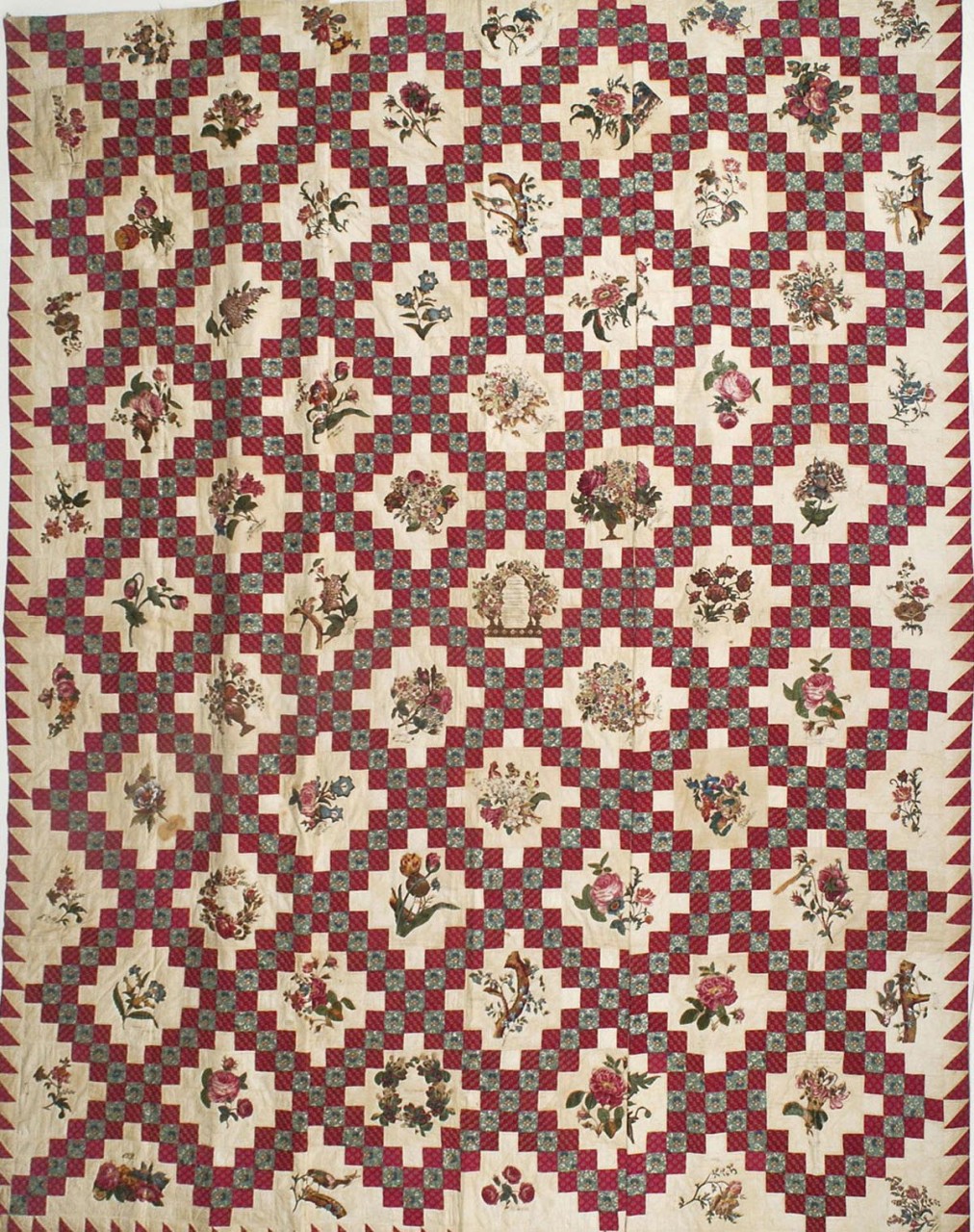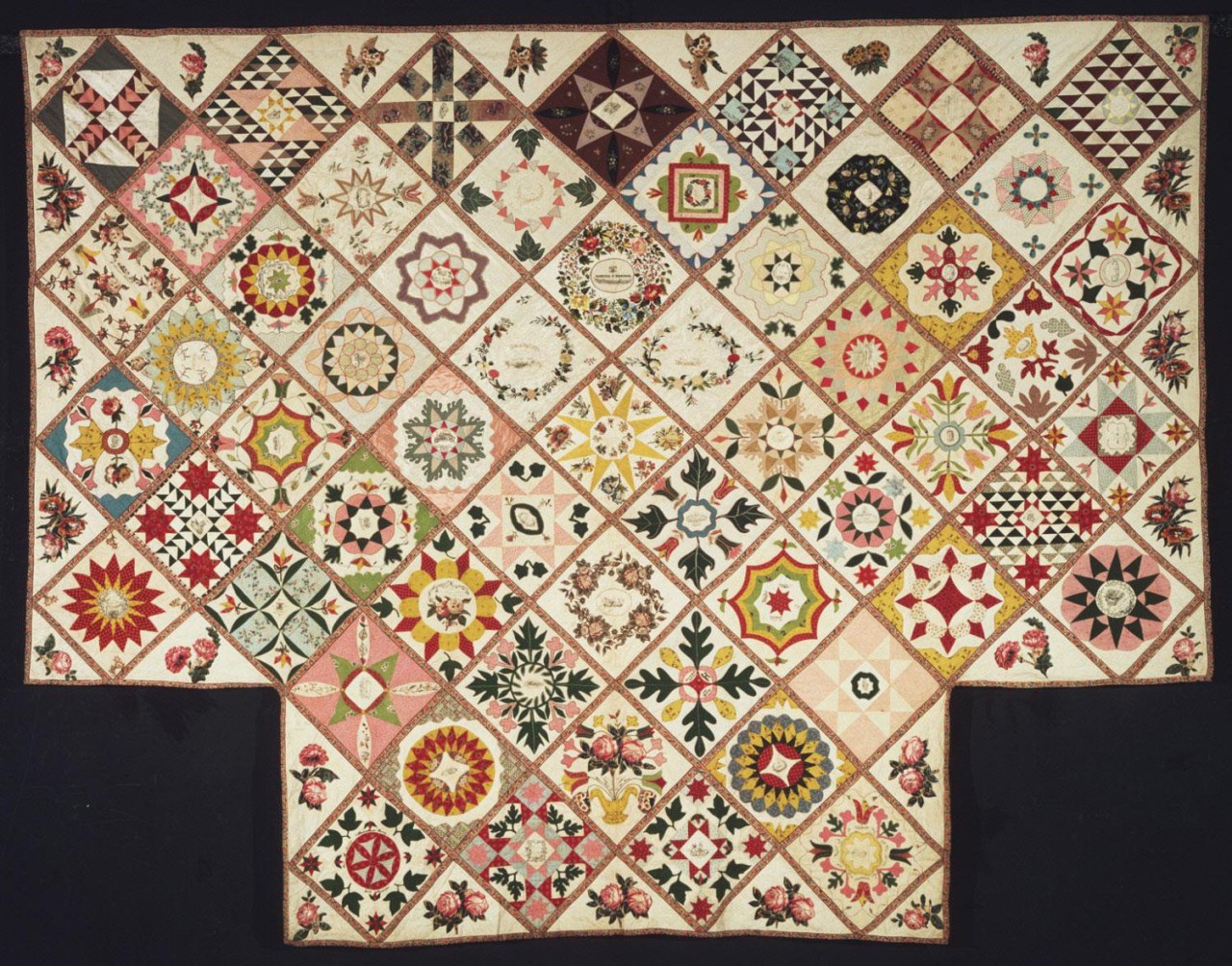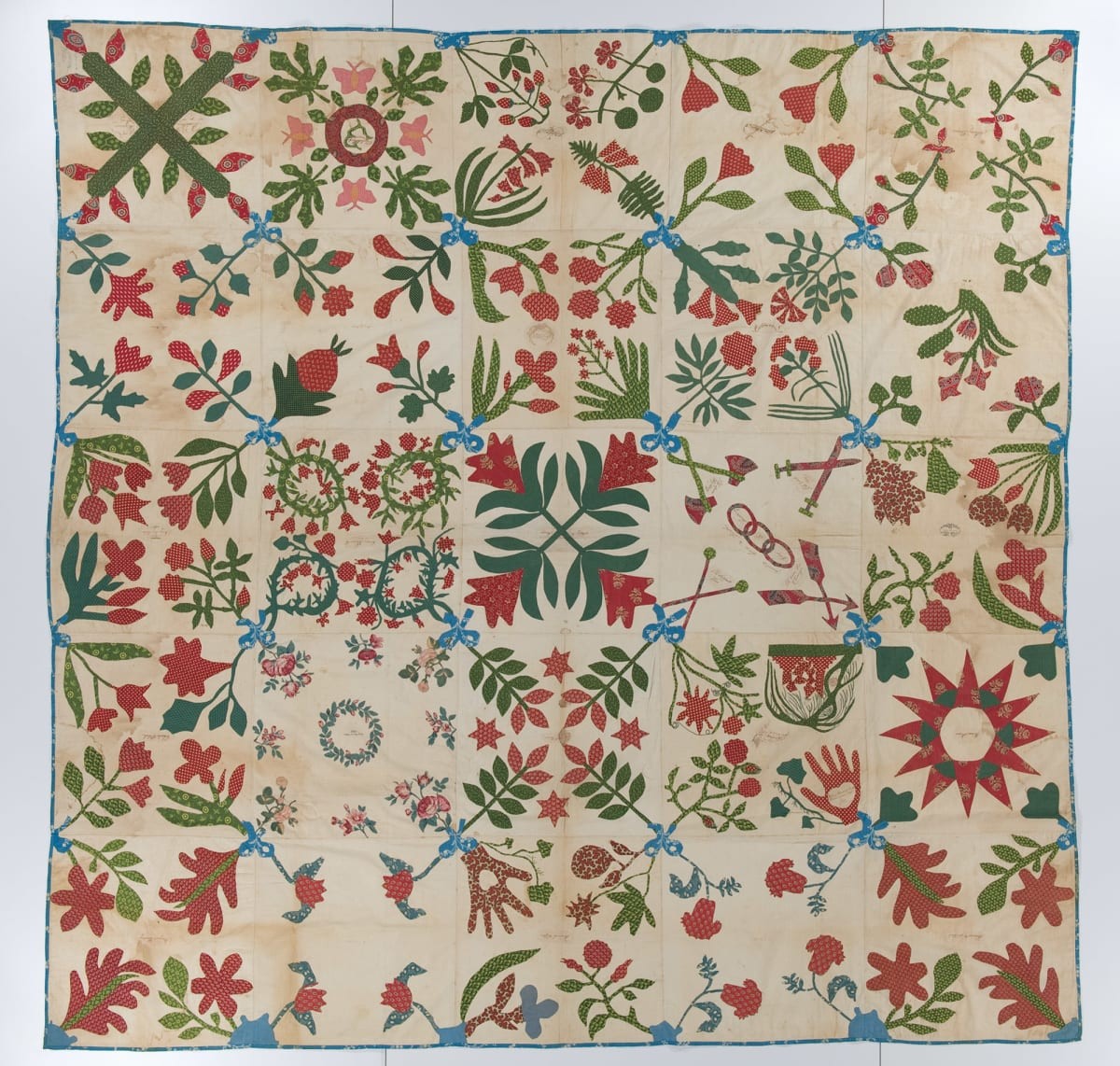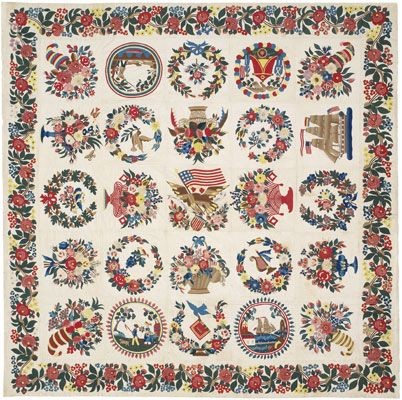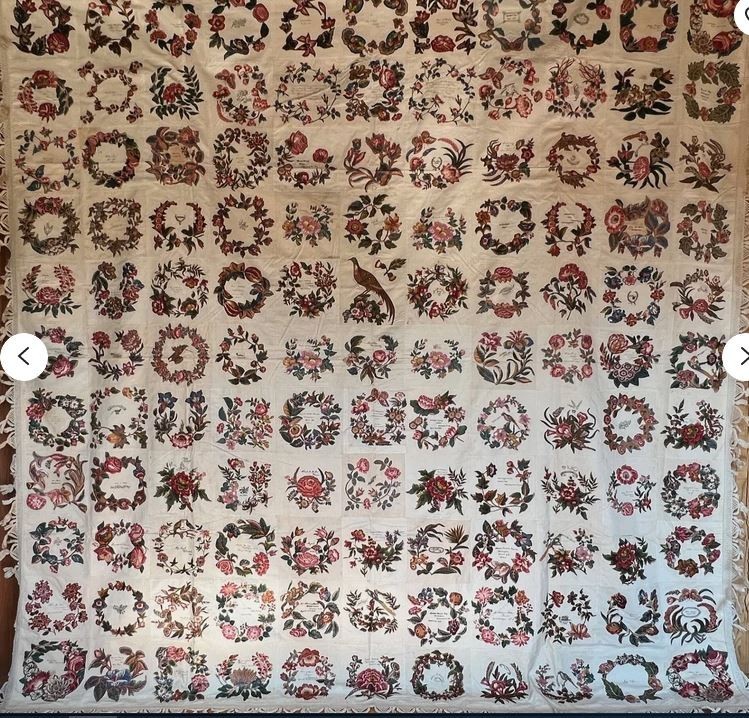
Now that 35 plus quilts have been located in the style dubbed Northern Cut-out Applique, it is time to really focus on each quilt/coverlet/quilt top to see if we can figure out that quilt’s particular story as well as how that quilt ties together with other coverlets from the grouping. This is especially true since these coverlets have inscriptions on the blocks which provide additional information. It makes sense to start with the coverlet in the Poos Collection. The Machette/Taylor Coverlet is so named because of the two inscriptions located prominently on the quilt with matching dates of April 27th, 1840. We have a chart of all the inscriptions on the coverlet to help guide our research. Multiple Machette and Taylor family members have their names inscribed on the coverlet and all of the blocks with...


